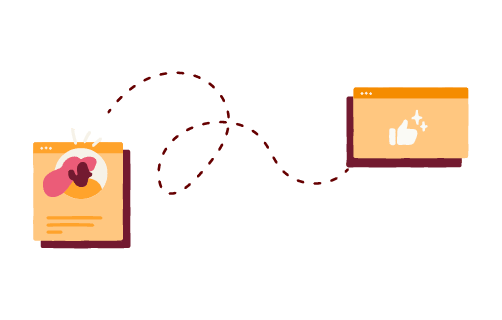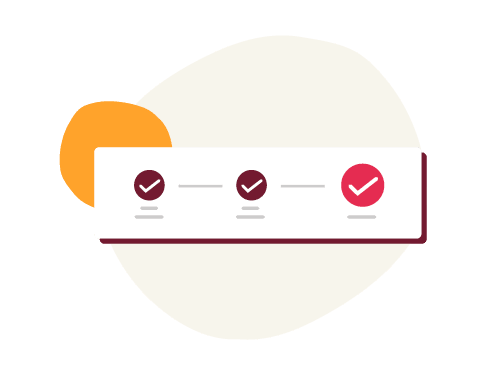Introduction
Workforce management (WFM) is the strategic and integrated system companies use to achieve optimal employee productivity. Initially, workforce management involved tracking work hours and scheduling time off. Today WFM has expanded to include automating and streamlining HR processes to create highly efficient, precise, and reliable results. This became even more necessary during the COVID pandemic, and continues to be a top priority as the world enters yet another period of unpredictable change and workforce challenges.
“Throughout the pandemic, HR has played a central role in how companies build organizational resilience and drive value,” according to McKinsey. “CHROs and their teams can continue on this path by connecting talent to business strategy and by implementing changes in the three core areas of identity, agility, and scalability … a more flexible and responsive model will also help organizations meet coming demographic shifts and other workforce changes.”
Workforce management approaches closely resemble those of human resource management (HRM). While HRM focuses on investing in the entire employee lifecycle, WFM focuses on productivity. The goals of WFM are to improve communication, resource use, and work products in ways that enhance productivity while also boosting employee engagement.

Integrating HR and workforce management
Today’s approach to WFM typically includes four key areas, all of which involve HR:
1. Workforce and labor planning
According to one study, workforce planning is a top priority for 33 percent of executives. WFM helps an organization manage deployment for its existing staff. It can also help determine future hiring needs.
Demand-based labor forecasts are essential to a solid budgeting process and become even more powerful when they’re built using historical data. With labor change happening rapidly, planning is no longer an annual event. Instead, workforce planning needs to be as agile as possible and is integral to WFM.
2. Scheduling, time, and attendance
Automating time and attendance processes and paid time off and leave management can provide immense WFM benefits for organizations. When people can manage their time and attendance through an automated WFM system, they have access and control over their schedules. Likewise, checks and balances can save days wasted on manual processes every month. A robust WFM approach also enables supervisors to track paid time off, overtime, and leave requests against budget allocations.
3. Performance and compensation
Key elements of workforce management involve how an organization tracks performance and how it rewards, recognizes, and compensates its people for their performance. As professionals develop and advance, WFM offers ways to strategically reward them and make plans for them to continue contributing to the organization.
4. Compliance
Organizations must track a variety of regulations based on industry, federal, and local employment requirements. These requirements and the associated data, documents, and certifications that demonstrate compliance are often very complex to manage.
With WFM, companies can use one system of record that HR, managers, operations, and individual contributors share to gather and store all documentation.
With increased scrutiny and potential risks of fines and other penalties, it’s essential that organizations use WFM to ensure workforce compliance across various industry certifications, pay, overtime, and safety regulations.
These areas illustrate the many workforce management activities required to maintain a productive workforce. Adopting an integrated WFM approach benefits HR, the business, and its people. Making that approach a reality requires strategic use of HR technology, data collection, budgeting, and forecasting.
Reap WFM benefits with HR tech
Achieving results through effective WFM is now an integrated part of HR software systems.
“Companies that rely on large workforces will need to change the way they manage employees,” according to HBR. “This will be even truer for the dispersed workforces that [became] common during the pandemic. From an HR perspective, a model that relies too heavily on frequent human interaction will not be cost-effective.”
WFM requires consistency, transparency, and automation. Without an HR system, companies simply don’t have the reliable data they need to implement WFM practices.
“You can’t build an accurate budget without accurate data, and a manual budgeting process that pulls data from spreadsheets is time-consuming and inefficient,” according to HR Toolbox. “No matter how large or small your organization is, having your employee data in an HR system that is integrated with your financial systems is critical for an effective budgeting process.”

As companies rebuild in the aftermath of the pandemic and fortify themselves against market ups and downs, embracing the digital age is imperative.
“Talent planning and management must become more strategic, more holistic, more rigorous, and more data-driven. Organizations that rebuild following traditional analog processes will be outpaced by more-prescient competitors,” according to HBR. “Given how much time it will take to build a winning talent pool, companies must begin future-proofing their organizations today.”
Hyperautomation drives efficiency
Gartner has identified five trends HR leaders must evaluate and embrace to advance their strategic technology planning process. One of those trends is hyperautomation, defined as an approach in which anything an organization can automate should be automated. Like WFM, the primary goal of hyperautomation is to leverage technology to create and drive efficiency.
“Hyperautomation provides tremendous opportunity to improve HR efficiency and reliability, particularly across transactions and workflows that are subject to errors, bottlenecks and delays,” according to Distinguished VP Analyst David Cearley at Gartner. “Right now, HR processes at many organizations are supported by a patchwork of technologies that are not lean, optimized, connected or explicit.”
The truth is, for effective WFM, you need HR tech that integrates key activities into one platform and one dashboard. Maintaining a high workforce management level demands automation and applying software capabilities to relieve HR professionals from some of WFM’s administrative details. Regardless of industry, organizations can use HR systems to put workforce management theories into practice in a way that supports the entire organization.

How WFM benefits HR
Many HR functions have already adopted automation, especially in payroll, recruitment, and HR service functions. But the team at Gartner emphasizes that HR leaders must continue to expand hyperautomation across other HR functions “to create an automation journey across all HCM processes to identify areas where optimization and automation can reduce hand-offs and labor costs.”
A workforce management system can help an organization improve its budgeting process, save on staffing, and manage workforce allocation more efficiently. When using the principles of WFM, leaders and HR teams can:
- Improve labor planning with historical and real-time data trends
- Reduce administrative burdens and costs through automation
- Promote agile business operations with workflow data analysis
- Manage and track adherence to compliance requirements
- Support pay transparency and equity
Handling these details in a WFM system leaves HR more time to focus on talent acquisition, development, and manager support.
Case Study
Skroutz is the leading online marketplace in Greece, with 560 people working out of their headquarters in Athens. They facilitated compensation review cycles using Google Sheets, emails, and Slack messages. Now they’re using Bob.
All the information they need regarding people’s salaries—current pay, increases, recommendations, and calculations and budgets—are handled by Bob. This switch to HR tech that supports their WFM needs saves the Skroutz HR team days of work. From an employee standpoint, it’s made the process smoother and more equitable for everyone involved.“I’m sure that we saved a week of work running compensation in Bob,” said Roza Tapini, Skrout’s head of people operations.
Within an HR system, employee classifications, time records, and pay rates make it easy for HR to assess the state of the workforce quickly. In addition to these administrative workforce data points, a strong WFM foundation helps HR identify opportunities, such as staffing or skills shortages, that HR can use to facilitate collaboration, efficiency, and goal-oriented decisions.
HR leaders can analyze employee productivity and engagement with a WFM system. These systems also provide leaders with access to pertinent KPIs. By measuring turnover, absenteeism, and retention, organizations have the insights they need to improve efficiency and identify any barriers to engagement.
How WFM benefits employers
Workforce management doesn’t just benefit HR. It benefits the entire organization. Think about the average manager who has three to five people to manage. That manager has to keep track of many details for each person on their team, including:
- How much each person gets paid
- When they received their last raise and/or promotion
- What skills they offer
- Which training courses they’ve completed
- How they contribute to organizational goals
That’s a lot of information to manage for just one team member, not to mention three, five, or more. If managers don’t have easy access to the information they need, it’s easier for them to lose sight of their people’s needs. More importantly, when companies overlook these crucial details, employee engagement and business outcomes suffer.
For example, if a company is not using WFM to track the skills of their existing workforce, managers and HR can’t address skills gaps with training, nor can they promote from within as easily. According to some experts, technology can help solve this problem and even help make an organization “future proof.”
“The best companies look to management development, often supported by technology, for reskilling their current workforces and filling at least some of their capability gaps with existing employees,” according to HBR. “The good news is that reskilling done well does help. In our experience, more than 60 percent of a company’s future roles can be filled by current employees, assuming that adequate programs are in place. Reskilling is also cheaper than the ‘fire and hire’ model for filling new business-critical roles.”
For many organizations and managers, spreadsheets have been the ad-hoc solution to keep track of all the moving parts involved in workforce management. Instead of this manual and laborious process, HR tech offers a way to embed strategic WFM into the business. When WFM is digital, it saves time and allows managers to focus their energy on higher-level concerns.

How WFM benefits employees
Don’t let the term “workforce management” fool you into thinking it’s something that happens to employees—it’s quite the opposite. WFM is a two-way street. Inherent in a successful WFM approach is the ability to allow and trust your people to manage themselves, including the management of their employment-related data.
“In an increasingly competitive employee talent market, employee self-service technology helps to create a positive work culture and to retain talent by giving workers direct control over their employment information,” according to TechTarget.
With the right WFM system, people have 24/7 access to employment data and the information they need to manage their work life. HR tech systems also provide simplified processes for employee-manager communication, including time-off approvals, training completion notifications, and one-on-one meetings.
WFM can even enhance the employee experience with an inclusive and comprehensive onboarding process that supports virtual relationship building. Additionally, WFM enables people to adjust their schedules and clock in and out with ease. WFM is an essential component to streamline schedules, PTO, and benefits for people in any location.
Recommended For Further Reading
Conclusion
If an organization wants business insights and comprehensive data about its workforce that helps increase productivity, efficiency, and effectiveness, workforce management is the answer. Workforce management ensures that leaders can identify emerging challenges and respond quickly and strategically. In short, workforce management enables an organization to be proactive.
But transformational WFM simply can’t and won’t be achieved using error-prone spreadsheets. An effective WFM solution offers connected and real-time data about people, budgets, teams, and the organization so that data informs everyone–and their business decisions. By using HR technology, HR can anticipate workforce needs from every angle—the business, team, and individual.
WFM systems allow organizations to streamline team workflows and operational costs. Those improvements lead to enhanced efficiency and improved productivity, driving better employee engagement and higher team morale. As companies rebuild and use everything the digital era has to offer, the right WFM solution will get them one step closer to reaching productivity and engagement levels that may have seemed impossible in the past.

Meet Bob
At HiBob, we’ve built a modern HR platform designed for modern business needs—today and beyond.
An HR platform such as Bob offers a one-stop-shop for all things HR. It sits at the center of your HR ecosystem, is fully customizable, and grows with your organization.
For HR, it delivers automation of many common processes, allows greater oversight and visibility of the business, and centralizes all people data in a secure, user-friendly environment.
For managers, it provides access to data and insights to help them lead more effectively and streamline processes.
For employees, it’s the tools and information they need to connect, develop, and grow throughout their journey.
In a short time, Bob can be deployed to enable communication, collaboration, and connectivity that drives stronger engagement, productivity, and business outcomes.
